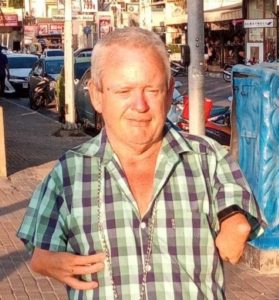Muscle Spasms
 Trust medical adviser, Susan Brennan, advises on what can be done to ease muscle spasms
Trust medical adviser, Susan Brennan, advises on what can be done to ease muscle spasms
Michael Brear asked this question via our Facebook Group
“Hi. Does anyone get truncal muscle spasms when twisting? Most of us twist more when dressing or doing normal daily functions but lately these annoying sometimes painful spasms seem to happen with greater frequency. Maybe no other reason than I'm getting to be an old git!!”
We contacted the Trust and received the following reply from Dr Susan Brennan:
A spasm can be felt as sudden tightness and pain in your muscles in a particular area. Muscle spasms can be caused by poor posture which can develop if you have short arms and have to compensate for reduced reach, or when you have to twist the body more when getting showered or dressed. From our experience most of the beneficiaries carry a lot of spasm because of this overuse of muscles caused by performing everyday tasks of daily living. The overuse and load on muscles then sends some muscle sets into spasm. The continuous spasm of the muscles then shortens the muscle and makes it less flexible. This then makes it less able to do things and the pain develops earlier in the performing that particular task or action.
What you can do to help ease any resulting pain
The things that we know can help are regular massage, heat and good posture in everyday tasks.
- Massage - We think works by stretching and lengthening the muscle back into its normal length and improving the blood supply to the area. If this isn’t done, then over time the muscle becomes shortened and can do less before it is irritated. The Trust can help find you a suitable massage therapist and we know many of you find benefit from regular massage therapy.
- Posture - Maintaining good posture is important but we also know it’s a balance between using your body for everyday tasks or the action causing pain and spasm. If the task causes severe pain, consider asking others for help to reduce strain on these muscles. Try to avoid lifting or carrying heavy bags and keep loads light if possible. A physiotherapist assessment may be helpful if you are looking to improve your posture and move in a way that puts less strain on your muscles and joints.
- Heat therapy - Heat therapy can be helpful. This probably works by the heat improving blood flow to the muscles involved that are spasming. Again, we know that many of you use Jacuzzis, saunas and heat packs for this reason.
Further support and information from the Trust
The Trust is also holding a webinar with a physiotherapist, Fraser, who has helped a number of beneficiaries. This will include information on things like posture, gait and good sleeping positions. More information to follow soon.
Muscle spasms are common but if you find them coming on with increasing frequency or severity, it’s worth having a chat with one of the Trust's Medical Advisers. Likewise, if you need help finding a massage therapist or physiotherapist, please contact the Health & Wellbeing team on 01480 474074.
